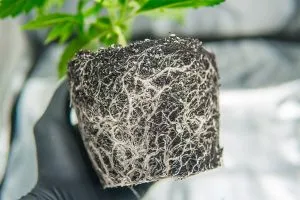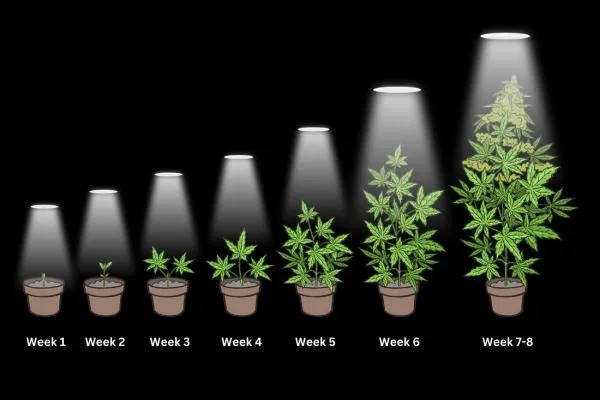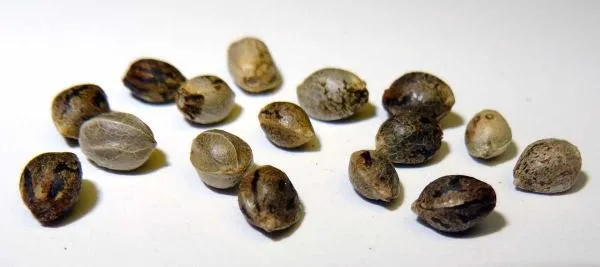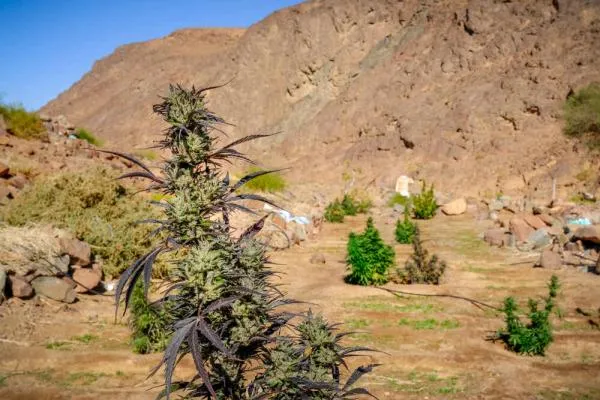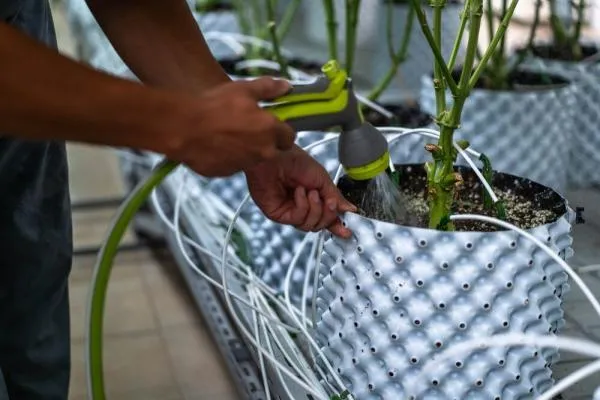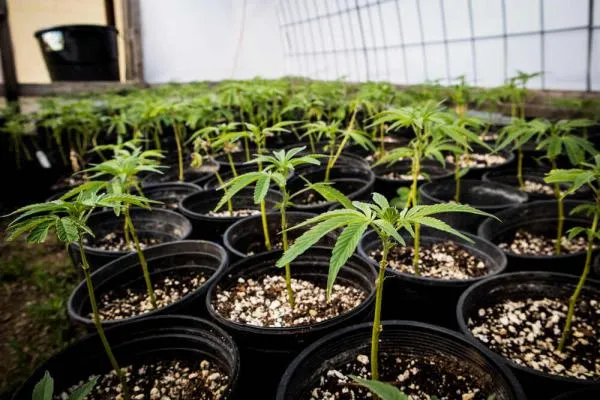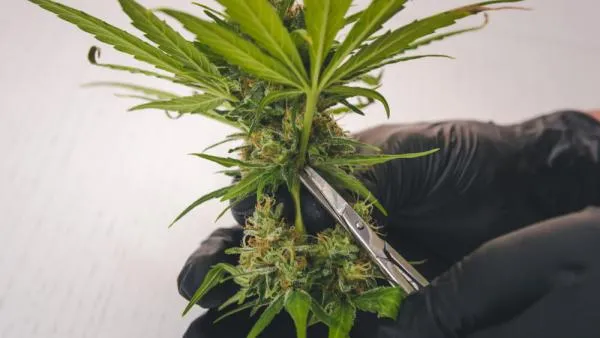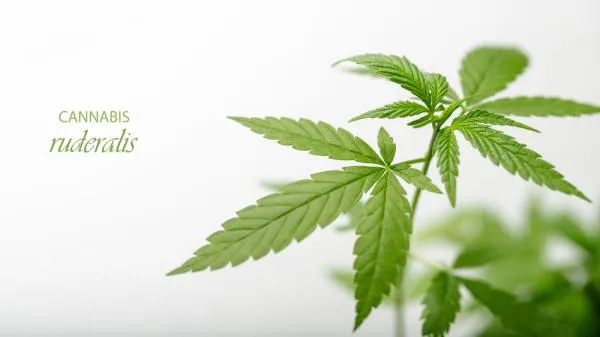A common saying amongst growers is, healthy roots equal happy plants. Considering the roots serve as the base to successful growing plants. Without a healthy root system, your cannabis plant might not reach its full potential. So, ensuring a healthy environment for your roots to thrive is key to quality crops. That’s why we’ve put together your complete guide to cannabis roots, and how to provide optimal care.
What do roots do?
First thing’s first - let’s better understand the answer to the question, what do roots do? Cannabis roots are similar to the body’s vital organs, like the heart or brain that keep systems functioning, healthily. Roots act as the plant’s main control panel that intakes what the plant needs through the grow medium. Their primary function is absorbing water, nutrients and oxygen, and then delivering them properly to the plant. Hence, their importance to successful growth. Being the base of the plant, healthy roots are also necessary to stabilize or anchor the plant into the medium you’re growing in.
Types of Roots
Beyond just knowing what roots are, and do, you should also know the varied types of roots that exist. The most three common root types include -
- Tap Root - A tap root references the large main base of the root that grows directly down into the soil.
- Fibrous Root - Completely opposite of a tap root, fibrous roots are thinner branches that stem off of root tissue and grow into the medium.
- Adventitious Root - Adventitious roots can sprout from any part of the plant, like the stem, and grow towards the medium.
As for structure, the root’s main base typically begins growing down vertically into the soil or medium, and then branch into secondary roots. This secondary branch of roots is another heart-related reference, often called horizontal ‘capillaries’. Meaning the end shape of a healthy root system is usually similar to a pyramid.
How do roots develop?
Roots do most of their developing in the vegetative stage of growth. They grow to their fullest potential in veg, and then begin to branch secondary roots once the plant has reached its flowering stage. The root capillaries are primarily responsible for absorbing nutrients to travel through the system, and back to the plant. Because roots grow in search of water, it’s important to use a medium or soil that enhances their ability to grow. Soils that are too compact can hinder secondary roots outreach. While soils that are over saturated can stunt growth altogether.
The signs of healthy roots
When transplanting your plants from veg to flower, or into bigger pots - you’ll be able to get a first-hand glimpse into the root systems. So what are healthy roots supposed to look like? The signs of healthy roots include a milky white colouring, and should be odourless, too. If you’re growing in pots, you should be able to see the roots growing throughout the medium. In direct contrast to the roots circling around the edge of the container.
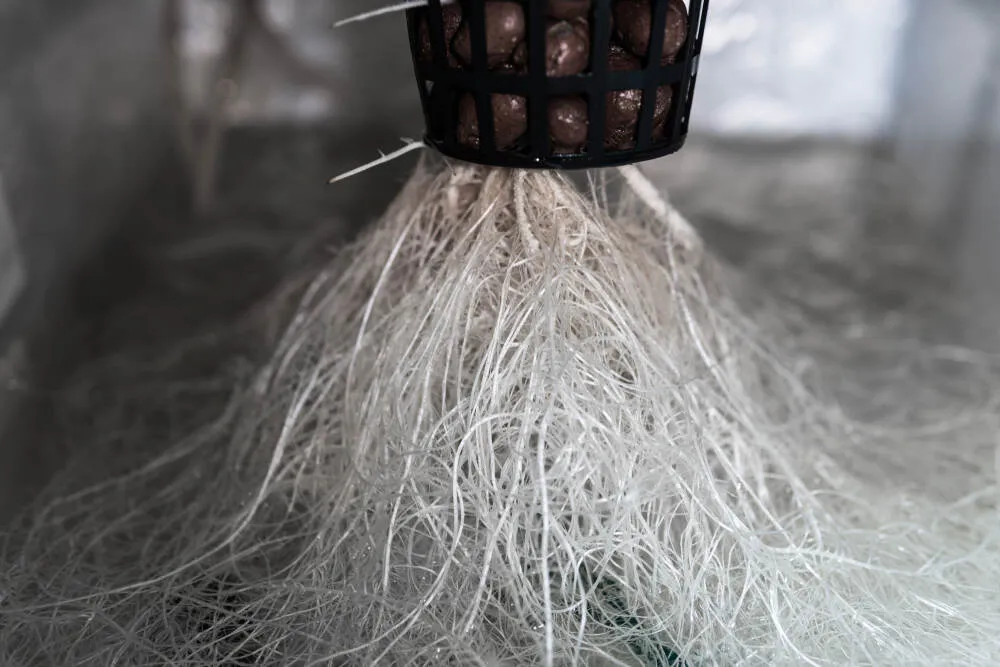
Keeping roots in good health
Overall, there’s a few simple factors that when maintained, roots can remain in good health. Again, healthy roots produce high-quality plants making the following components that much more important to pay attention to.
Oxygen
Plants receive oxygen through the roots, which is required for creating what’s known as the ATP molecule (adenosine triphosphate). This chemical is essential to successful growth, considering it’s the transporter of energy to the plant. Without a healthy root system, your plant might not get enough oxygen circulating which can cause a slow, starving death.
To improve oxygen intake for your plant, the following tips can help -
- Using smart pots or fabric pots.
- Adding perlite, vermiculite, or peat moss to your soil for an airy consistency.
- Using compost or organic soils with a blend of beneficial fungi, bacteria, insects, and microbes.
Temperature
Just as important as oxygen for healthy roots is maintaining an ideal temperature, too. Cannabis roots are typically the happiest around 75℉ (24 ℃) where they can respire and grow properly. To regulate the temperature of your roots in soil-based systems, you can do any of the following-
- Promote air circulation with an air outtake and intake system, and fans near the base of your plants.
- Place thermometers throughout your grow set-up, and monitor temperatures regularly.
- Outdoors, cover the top layer of soil with hay or mulch to insulate the roots temperature.
In hydroponics, water should be kept between 66℉ - 77℉ (19℃ -25℃) for healthy roots. In this range, oxygen levels are at their highest which also promotes optimal nutrient uptake. Tips to regulating temperatures in hydroponic systems include -
- Installing a chiller system.
- Add ice to your reservoir as needed.
- Paint your container white, which reflects light and heat for cooling.
Water
As we already mentioned, water is crucial to healthy root growth since roots extend in search of good ol’ H2O. So making sure you’re giving your roots the adequate amount, without overwatering is essential for cannabis plants. For soil environments, you’ll want to increase the amount of water slowly over time without over-doing it. It’s also beneficial to make sure you water all around the root especially towards the outer edge of the pot. In hydroponics, it’s all about the levels of water you submerge the roots in. You’ll want to maintain a fine line of keeping the roots wet to avoid drying out, but with enough air for respiration.
Nutrients
Nutrients are just as beneficial for healthy root growth as they are for the boost in growth for plants. Phosphorus and potassium are the most vital to roots. These two nutrients promote the growth of new roots while also extending the existing roots, too. Nitrogen is also helpful for boosting levels of phosphorus, overall. Prepping your soil with these nutrients beforehand is ideal, by mixing in any of the following -
- Bone meal
- Rock phosphate
- Wood ashes
- Kelp
- Greensand
For hydroponics systems, using phosphorus and potassium rich fertilizers from the start can help promote healthy root growth. Or, use nutrients rich in vitamin b1, indole-3-butyric acid, or 1-Naphthylacetic acid which are additional root strengthening boosters.
Root issues to address
When growing cannabis, it can be hard to decipher what signs or issues are what. Especially if they’re root issues that you can’t check or monitor, easily. We’ll make the issues simple with a breakdown of how to spot root issue symptoms, and what to do when they appear.
Overwatering & Under watering
A common mistake by beginner growers is overwatering or under watering. But fortunately it’s a mistake that shows itself quickly, and is easy to fix quickly, too. You’ll know your plant is getting too much or too little water, with the drooping or wilting of its leaves. When this occurs - check your soil. If it’s dry, you’re under watering. If it’s wet over a period of days, you’re overwatering. The solution? Simply change your watering cycle and amounts.
It’s best to let the soil completely dry out before re-watering. Do a weight check on your pots by lifting them before you water next, and make sure they’re light before water. If you’ve overwatered, let the pot completely dry out and use less water the first time you water again.
Nutrient Burn
In cannabis, there can be too much of a good thing. Like nutrients, and the burn that can occur when you use an excessive amount. Overdoing nutrients can damage the health of roots which stunts the growth of your plant, and can decrease your final yields. So keep an eye out for upward facing fan leaves, or leaves with yellow brownish tips which are a telltale sign of nutrient burns. One factor that can affect nutrient uptake is pH balance, which can be addressed in a few ways.
First, reduce the amount of nutrients while you investigate the issue. Then, conduct a pH and EC check to decipher what is the cause of the burn. Flushing your plants with correct pH water for at least a week, is also recommended. Once they’re flushed, ensure you learn your lesson and reduce the amount of nutrients you use moving forward.
Root Rot
With a name like root rot, you know it’s going to cause an issue in healthy growth for your plant. Meaning it’s important to avoid root rot before it occurs, especially since the signs can be harder to detect. Root rot occurs when bad fungi’s and bacteria build-up near the root system. This can occur from poor draining pots, and overwatering. The build up over time causes sickly, rotting roots.
The symptoms of root rot are similar to other common issues, like drooping, wilting, and yellowing leaves. But luckily, your sense of smell can help. Root rot will often emit a ‘rotten’ scent which you can sniff for, if you’re suspicious. Other than that, looking at the roots is the last resort which is obviously easier in a hydroponics system. If your roots are brown, and slimy then you’ve got a case of root rot.
To salvage your plants, immediately transplant into fresh, well-draining soil that’s chock-full of beneficial bacteria and fungi. Because of the shock, and obvious health issues you’ll want to ensure you monitor carefully and frequently from there. In hydroponics, you’ll want to completely clean and sanitize your entire system and add a bacterial agent to the fresh water. Before replacing your plants, gently washing the roots is also ideal.
Root Bound
Bound roots often occur when using too small of a pot or container. The roots have no room to grow properly, so they begin circling, and ‘binding’ together. The entanglement of roots affects nutrient uptake, and will eventually halt growth of the plant. Again, without being able to see the roots - how will you tell if they’re bound? Here’s the biggest signs to look for
- Signs of nutrient deficiencies, like yellowing leaves.
- Soil that’s drying out quickly.
- Plant tipping or leaning.
- Growth slowing down dramatically.
Avoiding root bound is much easier than fixing it, so always be sure to transplant your plant into bigger pots as it grows. Or, transfer the plant to its final sized container earlier than usual. Checking your pot’s drainage holes is a good way to monitor the growth of cannabis roots in general, and when to identify the time to transplant. If you see the roots through these holes, move the plant to a bigger pot. If you come across a root bound plant, before switching pots you’ll want to loosen the roots first. To do so, shake off the soil from the roots and prune them slightly with sterilized trimmers.
Fungus Gnats
Fungus gnats are the easiest root issue to identify, since you’ll see the flying bugs near the base of the plant. They’re also an issue you’ll want to treat quickly, since their larvae in wet soil feed off the root system overall damaging its health. If you want to keep a good eye on root issues before seeing the signs of them, you can periodically check your soil for fungus gnat eggs using a loupe if necessary for magnification. Not surprisingly, dropping or wilting leaves are also a sign of fungus gnat damage.
Once you’ve confirmed you have gnats, you’ll want to use sticky fly traps near the base of the plant. Because fungus gnats thrive in wet environments, hold off on watering and let your soil dry out, at the same time. To address the larvae, applying a mix of 1 part hydrogen peroxide to 4 parts water to the soil will kill what’s left behind. After that, and moving forward, cover your soil with perlite or sand as a barrier to bugs infiltrating the soil.
Healthy Roots for Happy High-Quality Plants
Roots may be out of sight, but they should be far from out of mind. A healthy root system is the basis for happy, high-quality plants, and we all know what that means - maximized yields. With that in mind, use these tips and techniques to promote healthy root growth, and to avoid the common issues that can occur.
